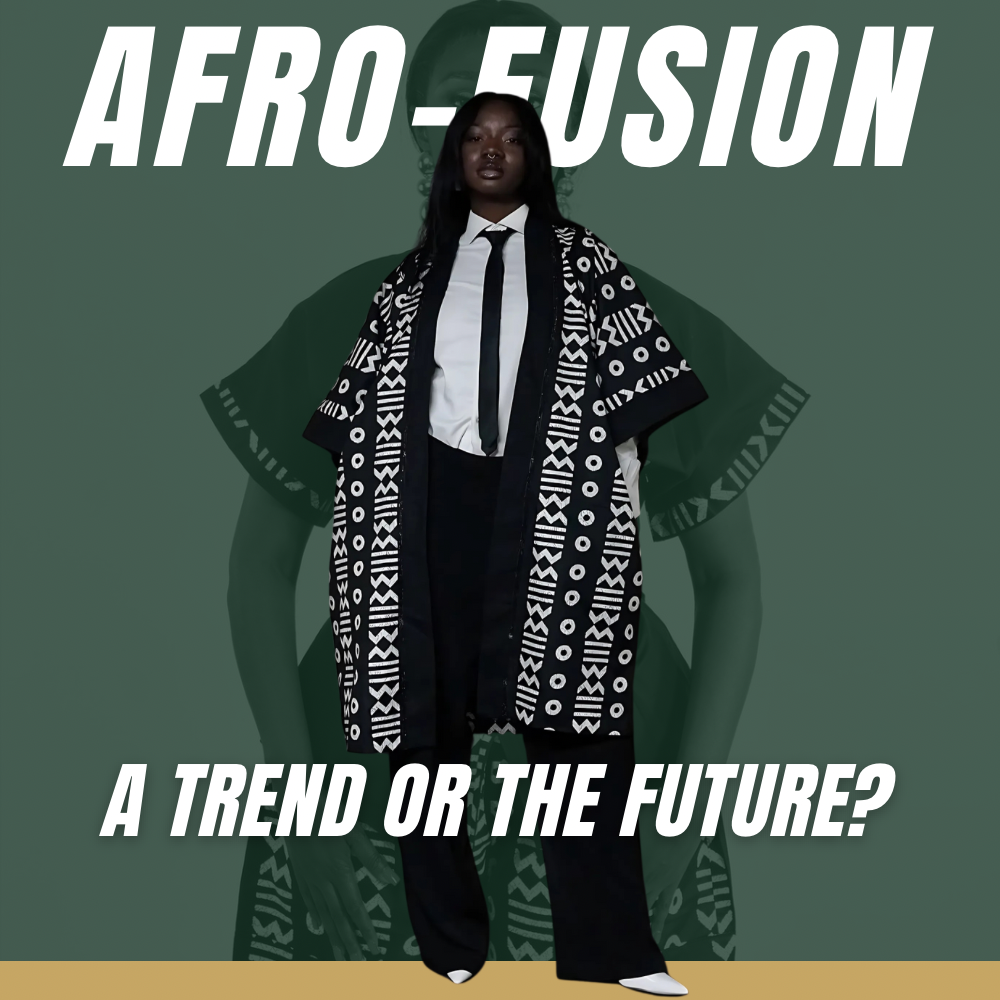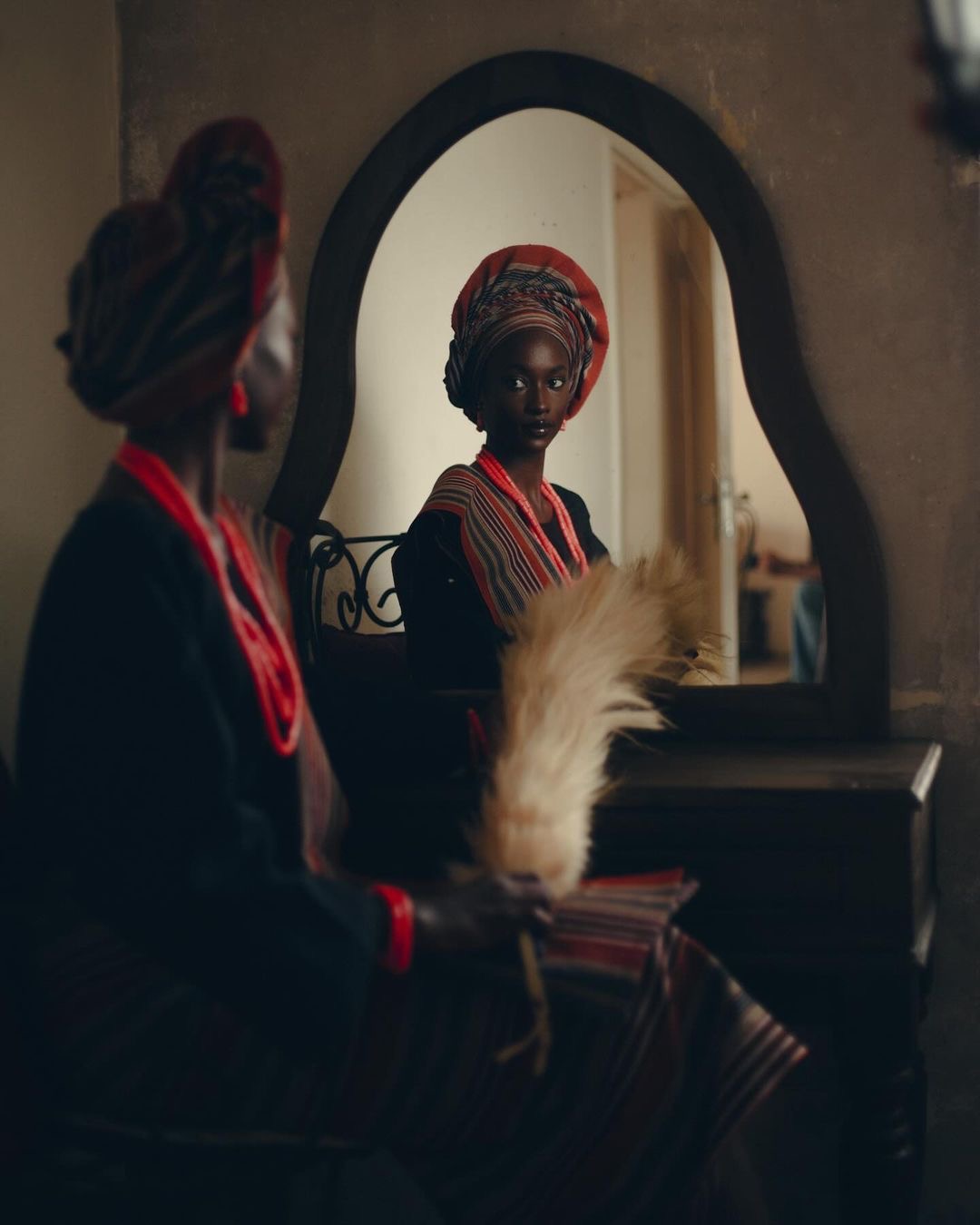
“Fashion is not just fabric , it’s memory, identity, resistance, and how we carry legacy forward.”
On the surface, fashion looks like fabric. Sketches. Patterns. Just clothes. But for those of us who learned the art of tailoring from true artisans, people who carried history in their hands, who had mastered the beauty of fabric making, pattern cutting, and fabric dyeing, it’s so much more.
Some of us learned not just from family, but from sitting in the corners of tailor shops, watching quietly, soaking it all in. The sound of the machine. The rhythm of the scissors. The patience it took to create something from nothing.
Fashion, for us, is memory. It’s identity. It’s resistance.
It’s expression.
It’s a skill passed down, a craft we hold close, and something we hope the next generation will carry forward.
It’s the way we walk boldly into the future while still holding on to where we came from.
It’s personal.
Fast fashion brands like SHEIN, PrettyLittleThing, and Boohoo have made it normal to buy outfits for £5, wear them once, and never touch them again.
These clothes are made at lightning speed, using cheap polyester that barely lasts and even worse, it doesn’t break down. A recent investigation by Unearthed and Greenpeace Africa found huge dumps of second‑hand UK fashion from brands like M&S, H&M, Zara, and Primark in protected wetlands in Ghana, areas that host endangered turtles and migratory birds, clogging beaches, waterways, and ecosystems.
Aerial footage showing second-hand fashion waste dumped in the Densu Wetlands, Ghana. Source: The Guardian
Ghana, Kenya, Nigeria, our grounds are literally piling up with other people’s cast-offs. Fashion waste from countries treating clothes like paper plates, use once, ditch forever. It’s not just disrespectful, it’s devastating.
I remember seeing a photo of a Ghanaian shoreline buried under discarded clothes, some still with tags, and feeling sick. It stuck in my mind. This is not what fashion should be.
But amid that crisis, something else is rising—and it’s beautiful. It’s powerful. It’s Afro Fashion.
Afro fashion isn’t just about prints or colours. It’s about reclaiming our narrative. It’s our way of saying: we are not here to copy trends, we’re here to show the world what it looks like to design with meaning.
Source: The Guardian – Discarded Clothes from UK Brands Dumped in Protected Ghana Wetlands
What makes Afro fashion so special? For one, we don’t just design to keep up with trends, we create with meaning. Our clothes carry culture, history, and soul.
Take Aṣọ-Oke, for example. It’s a handwoven fabric made by Yoruba artisans, often using cotton, silk, and metallic threads. Every strip is made on a loom, not in a machine, and the process can take days. It’s not just cloth, it’s a tradition passed down from generation to generation.
Or Adire, which is dyed by hand, usually on 100% cotton. The patterns aren’t random, they’re symbols. They tell stories about family, nature, womanhood, strength. It’s wearable art.
And then there’s Ankara. I know everyone knows Ankara, but real, high-quality Ankara, like the ones from Hollandaise, Vlisco, or Veritable Waxis 100% cotton, bold in colour, and built to last. Not the thin, plasticky versions that tear after one wash.
In many African households, it’s normal for parents to pass clothes down to their children, garments that have lasted 10, 15, even 20 years. Clothes are more than outfits. They’re heirlooms. A blouse worn by your mum in the '80s. A wrapper tied by your grandmother. These pieces become part of our story.
These aren’t just fabrics. They’re our roots, printed and stitched into every thread. And they’re made to last, not just through seasons, but through generations.

In many Yoruba households, early cloths like this are carefully preserved and passed down through generations.
We need to talk about cost, not just the price tag, but the real cost.
Fast fashion brands sell you a dress for £5, but let’s be honest: that dress costs way more than what’s on the receipt. It costs the environment. It costs dignity. It costs the stories that never get told, of workers underpaid and overworked, of rivers dyed toxic shades from careless production, of garments tossed out after one wear and shipped off to landfills across Africa.
You’ve probably seen them. Or maybe you haven’t.
Mountains of unwanted clothes, many of them barely worn, dumped in places like Ghana, clogging wetlands,
polluting water bodies, and choking communities. All in the name of “donation” or resale.
But in Afro fashion, that same dress is made with care. It’s stitched with memory. It lasts.
In many African homes, it's still common to see clothes passed down from mother to daughter, auntie to niece.
Some outfits are worn for decades and still hold their shape, colour, and meaning.
We make clothes that are meant to last, not to trend and disappear.
So, that cheap dress?
It’s not cheap. Someone, somewhere, paid the price.
Growing up, I saw how fabric could speak, how a single outfit could say, this is where I’m from and this is who I am becoming. I saw how women, especially African women, used clothing as armour, as celebration, as memory. That’s the energy I bring into my design process and the spirit I infuse into MANIA.
I design for the woman who is a story within herself.
The woman who isn’t looking to be styled, she’s looking to be seen.
When I launched MANIA by Jennifer, I knew I wasn’t just creating clothes. I was building a visual language for women like me, women who feel the beat of tradition in their chest but move boldly in modern spaces. Women who are multifaceted, cultured, creative, and never quite content with being one thing. The brand was born from that tension and harmony between roots and rhythm, between tribe and trends.
MANIA was founded in 2015, but in many ways, it’s been living inside me my whole life. The name, inspired by the French word “manière” (meaning “a way”), reflects my belief that fashion is more than trends or aesthetics, it’s a way of life. Our garments are designed not just to be worn, but to be lived in. Styled. Moved in. Remembered.
Every collection is a journal entry. Every piece is a love letter to culture, crafted in colour.
Our latest collection, Tribe x Trends, is a celebration of this balance, the old and the new, the traditional and the unapologetically bold. It’s for women who break moulds. Women who don’t just follow fashion but make statements with it. Women who know that softness and power can exist in the same silhouette.
From the Ayoka Set, named after the Yoruba word for joy, to the Aṣọ Cargo Pants, stitched with legacy and movement, every piece in this collection was designed with intention. This collection is not about following runways, it’s about walking your own.
It's for the ones who glide. Who disrupt softly. Who wear history and heritage without asking permission.
The Tribe x Trends collection isn’t just a lookbook. It’s a reminder that fashion can carry memory. That colour can speak truth. That silhouette can carry soul.
I believe in fashion that feels rooted , not just in where we come from, but in who we are becoming.
So if you’ve ever looked in the mirror and wanted your outfit to speak for you before you say a word
If you’ve ever wanted to feel bold, beautiful, and both
Then you already know what it means to live fashion as a way of life.
That’s what MANIA, is. That’s what we stand for. That’s what we wear.
People talk about African fashion like it’s just now arriving on the scene, like we’re some “next big thing” waiting to break through. But let’s be clear: we’ve been here.
We are not a trend. We are the blueprint. Our fabrics, silhouettes, and techniques have inspired global fashion for decades— only now is the world starting to give us credit for it.
African designers are not “emerging.” We are established. Rooted. We carry entire histories in our hems. Our grandmothers sewed with needles and hope. Our mothers cut cloth with stories in their hearts. And now, we’re building brands with that same energy.
From Lagos to London, Accra to Atlanta, we’re taking up space. And not just with our prints, but with our voice.
You’re supporting a designer who creates from the heart.
You’re choosing style that actually lasts.
And you’re making a statement—one that says fashion should have meaning.
So next time you’re about to buy something new, ask yourself:
Is it made to last, or made to disappear?
Because around here, we don’t do disposable.
We do rooted. Real. Remembered.
When you wear Afro fashion, you're not just putting on a dress or a two-piece. You're wearing stories. You're wearing memory. You're wearing pieces of heritage that were never meant to be disposable.
You’re choosing to support designers who create with their hands, their hearts, and their history. You're choosing fabrics that were made with intention. You're choosing to value tradition over trend, and meaning over mass production.
Afro fashion is bold. It’s rooted. It’s alive. It moves through generations. And when you wear it,
you’re not just expressing style, you’re honouring culture. You’re making a statement that says:
"I know where I come from. And I wear it with pride."
Fashion isn’t just about looking good. It’s about feeling grounded. Rooted. Seen.
So if you’ve ever stood in front of a mirror and wished your outfit could speak for you—before you even opened your mouth... If you’ve ever wanted to feel bold, beautiful, and both—then you already know what it means to live fashion as a way of life.
That’s what MANIA is. That’s what we stand for. That’s what we wear.
With love,
Jennifer Akong
Founder & Creative Director, MANIA by Jennifer
maniabyjennifer.co.uk
@maniabyjennifer
Leave a Comment